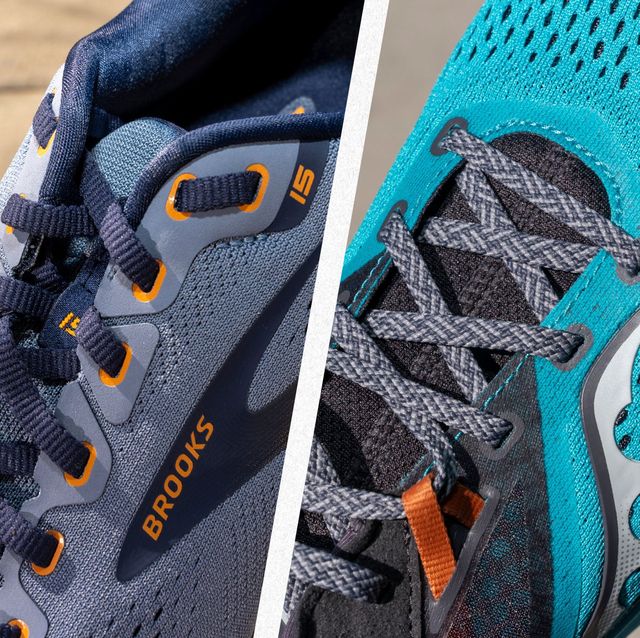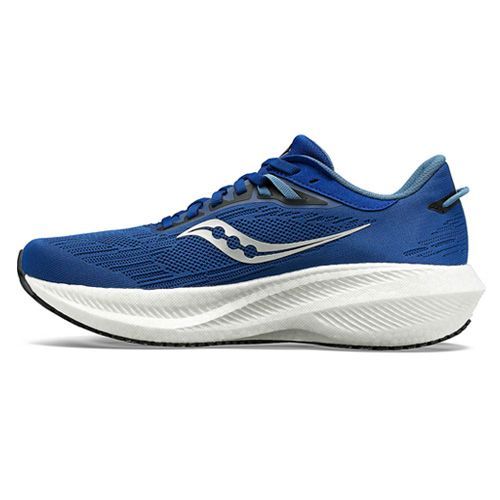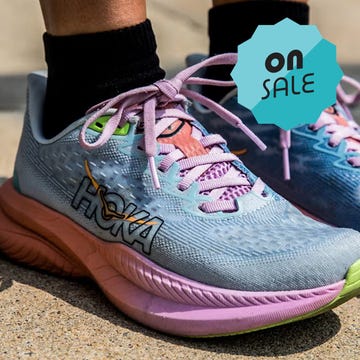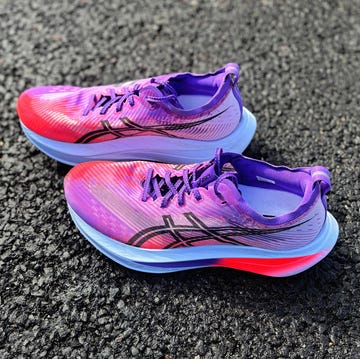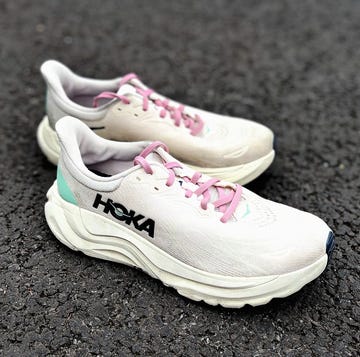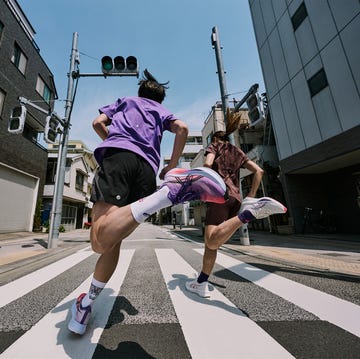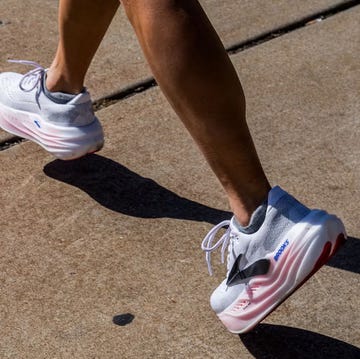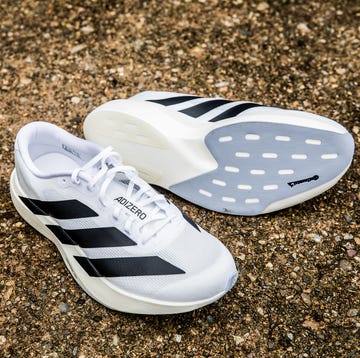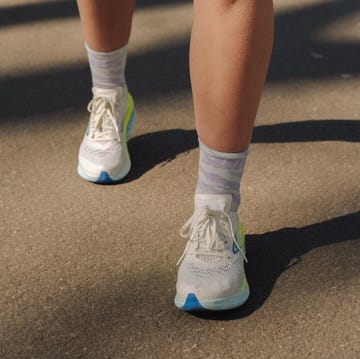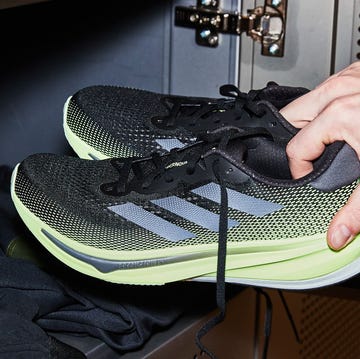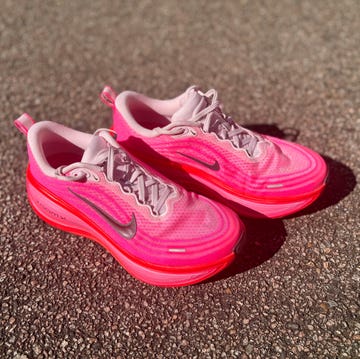As we noted in a recent head-to-head, maximalist cushioning is all the rage among running shoes. This cushiony tech lets shoes absorb tons of repeated impact without permanently flattening the cushion into a pancake. And industry mainstays Saucony and Brooks have embraced this trend, pumping plenty of plushness into their pillowy soles while still opting for a 'less is more' design approach.
Both brands offer shoes that fall pretty close to the sweet spot between overbuilt and minimalist. In other words, they balance forward-thinking design without inflating the cost – or the outsole. But they diverge greatly in terms of how they strike that balance, so much so that many runners prefer one over the other.
Each brand has its popular mainstays that offer supreme cushioning, solid energy return and a comfortable fit – but depending on your needs, one brand’s shoe may be a better fit than the other. Let’s explore the differences between Saucony and Brooks to determine which of their best is suited for you.
What everyone's reading
Saucony vs Brooks running shoes
- Daily trainers: Saucony Ride 17 vs Brooks Ghost 15
- Race day shoes: Saucony Endorphin Pro 4 vs Brooks Hyperion Elite 4
- Max-cushioned shoes: Saucony Triumph 21 vs Brooks Glycerin 21
- Trail shoes: Saucony Peregrine 14 vs Brooks Catamount 3
Key differences between Saucony and Brooks running shoes
→ Fit
Saucony and Brooks have similar technical shoes, but they differ significantly in terms of fit. The former tends to have a narrower, snugger fit, while the latter is roomier, particularly in the toe box. If you prefer shoes with very little play for your foot to move around, you might like the snug stability of Saucony. Some runners find them too tight, though, so if you like your foot to have room to breathe, lean toward Brooks.
This difference also extends to the drop. Saucony shaves off a few millimetres, resulting in a slightly more natural feel, whereas the Brooks may have a more noticeable differential between toe and heel.
→ Cushioning
Each brand has its own proprietary foam tech for maximalist cushioning.
Brooks’ DNA LOFT emphasises marshmallow softness above all else. It’s achieved by pumping common EVA foam with air and nitrogen, resulting in extra cushioning without extra weight.
The company’s BioMoGo DNA is more adaptive, shifting the balance toward springiness. While it’s still soft due to a toned-down version of its proprietary foam, it may feel more natural to some runners than DNA LOFT foot pillows.
Saucony’s somewhat new Pwrrun tech, on the other hand, is lighter and delivers more energy return. The latest version is Pwrrun HG, which uses compressed PEBA (polyether block amide) foam beads to create a bouncy, moderately cushioned structure. It’s lightweight and known for its outstanding energy return.
Saucony’s Ride 17 is a highly versatile daily trainer and a solid choice for most road running and easy packed trails. It also feels excellent on longer runs thanks to its well-cushioned midsole and lightweightness. While it’s a bit too tight to slip on if you prefer to leave your trainers tied, that snugness translates into pretty decent stability. Super durable, this is the kind of workhorse shoe you’ll enjoy for several hundred miles.
The updated Ghost 15 from Brooks is a bit heavier than previous editions, but its outstanding cushioning and cozy upper result in an incredibly smooth, comfortable run. That weight makes them too much for speed work, but they feel fantastic for long, lazy rides or even moderate distance races. All that cushioning also makes them great for runners with joint pain.
The Saucony Endorphin Pro 4 is built to run comfortably until your legs give out. Its feather -light and pillowy Pwrrun PB cushioning feels fantastic during long runs and the re-engineered nylon plate delivers plenty of propulsion. The company’s SpeedRoll tech – essentially a rocker that smooths the motion of your footfalls – results in fast transitions, too. It locks down firmly and is super breathable, and while runners with wider feet might find the toe box tight, I appreciate the stable snugness.
Similarly geared toward long distance comfort, the Brooks Hyperion Elite 4 is competitively lightweight and very nicely cushioned thanks to the abundant use of the brand’s DNA Flash v2 foam. The full length carbon SpeedVault Race+ Plate delivers quick, smooth transitions as well. However, the Hyperion Elite 4 could benefit from a bit more bounce and snap to support speed. So, we'd say the Endorphin Pro 4 probably takes the crown here.
Both of these shoes deliver fantastic levels of cushioning, but the Saucony Triumph 21 squeaks into the lead in terms of plushness, all due to the incredibly soft Prwrun+ midsole. That midsole is great for distance running, heavier runners, or runners dealing with injury recovery or joint pain issues. It also has a solid energy return, adding an extra spring to your step. Its stability is questionable, however. While it does have the company’s GuardRails along each side to create a fairly stable platform, from my experience it can get mushy at times, especially when cornering.
The Brooks Glycerin 21 is certainly no slouch for cushioning either. The company’s updated nitrogen-infused DNA Loft v3 foam is not only tremendously soft, but also helps to deliver excellent energy return. The upper is sturdy, soft and breathable, and it’s great for pretty much any run, including extra-long distances. Here again, however, it has a distinct lack of stabilising features, aside from a more streamlined upper on the latest version.
These are two very different trail shoes. The Saucony Peregrine 14 leans into technical trail capabilities, providing plenty of traction and sensitivity. This enables fast manoeuvrability over uncertain surfaces and prevents slipping by making it easy to feel the trail. While it could use a bit more rock protection underfoot, the toe is decently protected. All in all, the Peregrine 14 can tackle pretty much any trail you throw at it, although some runners might find Saucony’s typically narrow toe box too tight.
The Brooks Catamount 3, on the other hand, doesn’t offer the traction necessary for more technical trails. It offers good stability, energy return and cushioning, though, making it a good pick for flatter, less challenging terrain. Avid trail runners may find the durability somewhat lacking, although it’s still plenty comfortable. While you probably wouldn’t want to run a race in a pair, the Catamount 3 is a fine pick for casual, easy-to-moderate trail running.
